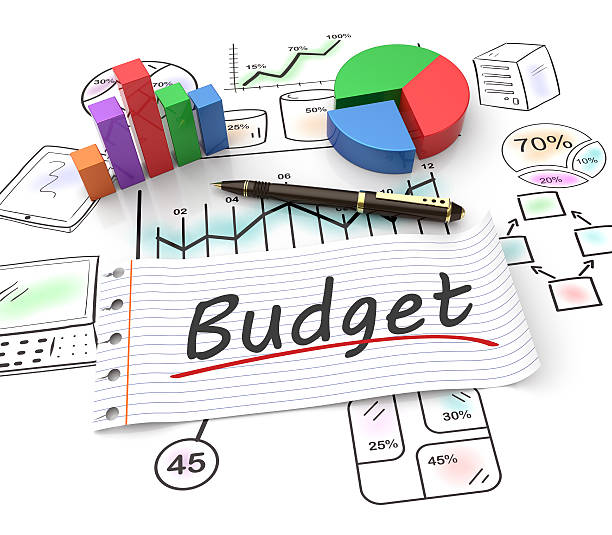8 simple and easy steps of budgeting process to get better at your finances
Introduction
Did you know that 1 in 5 Americans have no savings at all and 1 in 3 have less than three months of expenses saved for a rainy day.
According to the latest statistics, nearly 75% of Americans have some kind of budget which is great news but again 65% have no idea how much they spent last month.
Let’s face it – being adults comes with a hefty dose of financial responsibilities.
Whether it’s paying bills, maintaining a good credit score, building an emergency fund, saving for that dream vacation/home, or planning for retirement, managing money is a skill we all need. But, unfortunately, none of these skills are taught in school.
When we were kids, we were told to work hard and get great grades so we could get into a good college and eventually land the dream job that pays well and covers all of our expenses. But, guess what, if you don’t know the basics of finances, it does not matter how much you earn, you will always fall behind.
Let’s talk about the key foundation of finances – budgeting! We are going to break down the seemingly daunting task of budgeting into 8 bite-sized, easy-to-follow steps, with real-life examples that show how anyone can master their finances.
Say goodbye to money stress and hello to financial confidence!
Step 1: Set Clear Financial Goals

Picture this: You’re in a race, blindfolded, with no idea where the finish line is. Sounds ridiculous, right? Well, that’s what it’s like trying to manage your finances without clear goals.
Setting specific and achievable financial goals is like giving your budgeting journey a GPS. Whether you’re aiming to pay off your credit card debt, take a dream vacation, or retire early, having targets in mind can add purpose and motivation to your budgeting endeavors.
Meet Sarah, a 28-year-old marketing professional. Sarah’s financial goal is to save up $10,000 for a down payment on her first home within the next three years. Having this specific goal in mind gives her budgeting process a purpose. It motivates her to cut back on eating out and redirect those funds towards her home fund.
So, set some financial goals for yourself based on what stage you are at in life. If you have student loan debt with a high-interest rate, you better have a plan to pay that off instead of spending on a new car. Come up with clear goals on what you want to accomplish in the next 1 to 3 years.
Step 2: Calculate Your Total Income

Alright, it’s time to do some financial reconnaissance. Get ready to gather all your income sources – your paycheck, side hustles, freelance gigs, that odd job you did for your neighbor last week – every single dime counts. Using apps or tools can help you calculate your monthly income more accurately, ensuring that you have a solid foundation to build your budget upon. Here are some apps you can use – YNAB, EveryDollar, PocketGuard, Mint and Goodbudget.
But, if you are a pen and paper or Excel kind of person that works too.
John is a freelance graphic designer with varying monthly income. Last month, he earned $2,500 from a design project and $800 from his part-time job. By calculating his total income of $3,300, John can better plan his expenses and savings goals, ensuring he’s not overspending during leaner months.
Step 3: Track Your Expenses

Welcome to the world of expense tracking – your budgeting best friend. Think of it as keeping a diary of your financial life. Every coffee, every grocery run, every late-night impulse buy goes into this diary. It’s like shining a light into the dark corners of your spending habits. The best part? You’ll finally see where your money is sneaking off to and gain better control over your spending.
Emily loves shopping, but she’s unsure where her money goes each month. Using a budgeting app, she tracks her expenses for a month and realizes she’s been spending $200 on impulse clothing purchases. Seeing this, she decides to cut down on unnecessary shopping and redirect that money towards her travel fund.
Where is your money sneaking off to? Mine goes to late-night clicks on Amazon Prime shopping 😊
Step 4: Categorize Your Expenses

Remember that time you Marie Kondo’d your closet and found that long-lost pair of shoes? Categorizing your expenses is a bit like tidying up your financial space. You start by sorting your expenses into logical categories like housing, transportation, groceries, entertainment, and more. Don’t hesitate to personalize these categories to match your lifestyle – it’s your budget, your rules.
Michael, a recent college graduate, sorts his expenses into categories: rent, utilities, groceries, entertainment, and student loan payments. By categorizing, he can see that a significant portion of his income goes to student loans. He decides to allocate extra funds to pay off his loans faster, while also setting aside money for social activities.
Step 5: Create a Realistic Budget

Time to put your plan into action! Allocate your income to the different expense categories you created based on your tracking data and your goals. Ever heard of the 50/30/20 rule? It’s a straightforward guideline where 50% of your income goes to needs (like rent and groceries), 30% to wants (dinners out and streaming subscriptions), and 20% to savings and debt payments. Remember, it’s about balance and ensuring your spending aligns with your goals.
Emma is a teacher earning $3,000 per month. Following the 50/30/20 rule, she allocates $1,500 (50%) for essentials like rent, groceries, and bills, $900 (30%) for dining out and leisure activities, and $600 (20%) for savings and paying off her car loan. This balanced approach allows Emma to enjoy life while working towards her financial goals.
Step 6: Monitor and Adjust

Budgeting isn’t a set-it-and-forget-it deal. It’s more like navigating a maze – you’ve got to stay alert and make adjustments along the way. Regularly checking your budget helps you stay on track and spot any deviations. Life loves throwing curveballs, and unexpected expenses might crop up. That’s where the flexibility of your budget comes into play. Adjusting it to accommodate life’s surprises keeps you on the financial straight and narrow.
Daniel had his budget set until his car unexpectedly needed repairs. He dips into his emergency fund to cover the expense. By regularly monitoring his budget, Daniel spots the deviation and adjusts his budget to rebuild the emergency fund. This flexibility ensures he’s prepared for future unforeseen expenses.
Step 7: Build an Emergency Fund

Imagine this: your car breaks down, your fridge goes on strike, or worse – you lose your job. Cue the dramatic music, right? That’s where an emergency fund swoops in as your financial superhero. This fund acts as a safety net, providing a cushion for unexpected expenses and helping you avoid spiraling into debt. Start by setting aside a portion of your income specifically for this fund. Think of it as your financial peace of mind.
Sophia, a recent graduate, starts building an emergency fund with $100 from each paycheck. Within a year, she has saved $1,200, which comes in handy when her laptop breaks down. Having the emergency fund prevents Sophia from going into credit card debt to cover the cost.
Step 8: Celebrate Milestones and Stay Motivated

Remember acing that difficult exam or hitting a personal record at the gym? Feels pretty awesome, doesn’t it? The same principle applies to your budgeting journey. Celebrating your financial victories – whether it’s paying off a credit card, reaching a savings milestone, or sticking to your budget for a month – keeps you motivated. Rewarding yourself (within reason, of course) helps solidify positive financial habits.
Alex has been diligently following his budget for six months and has paid off one of his credit cards. To celebrate this achievement, he treats himself to a weekend getaway. The celebration not only rewards his efforts but also motivates him to continue making progress on his financial journey.
Conclusion

You’ve just unlocked the secret to financial peace – mastering the art of budgeting. By following these 8 simple steps, with real-life examples as your guide, you’ve equipped yourself with the tools to take control of your finances, reduce stress, and work towards a more secure future.
Remember, budgeting is a skill that gets better with practice.
So, why wait? Start implementing these steps today and witness the transformation in your financial life.
Whether you’re dreaming of a vacation, aiming to pay off debt, or planning for a comfortable retirement, a well-structured budget can make all the difference. Your wallet will thank you, your future self will thank you, and you’ll be on your way to achieving your financial goals with confidence.
Ready to embark on your journey to financial freedom? Take the first step now and put this budgeting plan into action. Your financial well-being awaits – go grab it!

Hi there! My name is Madhavi. Newgrowthzone is all about reaching your full potential. If you are interested in getting out of your comfort zone and reaching for your dreams, keep reading!







